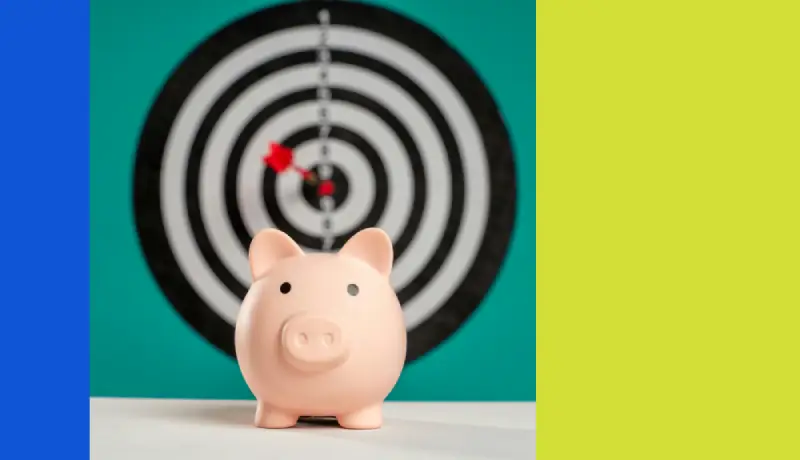Photo by Keira Burton
So many social media posts today talk about delaying your investments in capital markets in favour of investing in yourself. What does it mean to invest in yourself?
Loosely put it is about enhancing your skill set in the profession that you have chosen as a means to earn your living. There are several ways to invest in yourself; you may choose to study or do a paid course that helps you or you may choose to get those skills through experience which is more about the work than the pay, or you may choose to plunge into the deep end and begin a venture in your area of interest, learning the hard way.
Whichever path you choose to invest in yourself and improve your skills, it doesn’t have to be done at the cost of creating wealth for your future. What this means is that investing in yourself and investing in assets to create wealth are not mutually exclusive activities. While investing in yourself is important, you cannot argue away the importance of creating wealth.
What I do know for a fact is that the earlier you begin the journey of investment the more you can benefit from compounding. This holds true for investing in yourself and for investing in the markets. So, why compromise on one or the other, why not balance it out and indulge in both?
Moving side by side
Each person will have a unique skill set to enhance and your particular skills may not match another’s, however, starting out your financial investment could be similar to what your peer is doing.
When it comes to building long-term wealth, the choices are plenty. You can choose to put your savings in a bank fixed deposit, you may choose to buy equity shares, futures and options, equity or debt mutual funds or even invest in cryptocurrencies. However, each choice comes with a varying degree of risk and return expectation. Moreover, in some cases like bank deposits and futures and options, the capital commitment at the start may be higher than in others.
If you want to invest in yourself and grow your wealth all at the same time, you need to have the flexibility to start investing small amounts of money, so that other aspects of your spending – be it on lifestyle or on education – don’t suffer. For this purpose, you need to focus on creating systematic investment plans or SIPs in good quality assets which offer the flexibility to invest and withdraw whenever you want and offer a good variety of products, along with being tax-efficient and transparent investment products.
At the moment, equity shares and equity-oriented mutual funds tick all these boxes and investing in them through digital portals or even through human advisors is a simple process. If you want to do it yourself, it won’t take more than half an hour to begin, provided you have all the documentation ready.
Let’s say, you begin a systematic investment plan in buying shares of ICICI Bank. You can buy one share in a month, which is a less than Rs 1000 investment and at the end of the year have 12 shares in your name. At the current market price, you will end up spending roughly Rs 11,000 in a year. Let’s say you are 25 years old and you hold on to this stock for ten years, the value you create is unknown today, but can very well be estimated to grow at roughly 10% a year. Your Rs 11,000 investment made in the first year can potentially grow to Rs 30,000 at the end of 10 years, almost three times.
If you are unsure about which stock to buy, you can simply invest in the Nifty 50 exchange-traded fund and invest in the basket of stocks that form the index. Let’s assume you invest Rs 500 every month, for 10 years. That’s a total investment of Rs 60,000 and at an expected return of 12% annualised, it can grow your money to around Rs 1,20,000 at the end of ten years. Remember, you make this money simply by investing Rs 500 a month, which is less than the cost of two coffees at Starbucks.
The tables below show you how much wealth you can create simply by starting early, even if you were to start small. A Rs 500 regular monthly investment can grow to Rs 9.5 lakhs in 25 years. Increase that to Rs 5000 a month for 25 years, and you can potentially have almost a crore earned from that. The longer you remain invested the greater your benefits from compounding.
A regular monthly investment made at an expected return of 12% annualised over a long period of 10 years
| SIP Amount (Rs) | Total Invested (Rs) | Expected Amount (Rs) | Expected Wealth Gain (Rs) |
|---|---|---|---|
| 500 | 60,000 | 1,20,000 | 60,000 |
| 1,000 | 1,20,000 | 2,30,000 | 1,10,000 |
| 2,000 | 2,40,000 | 4,60,000 | 2,20,000 |
| 5,000 | 6,00,000 | 11,60,000 | 5,60,000 |
| 10,000 | 12,00,000 | 23,20,000 | 11,20,000 |
| 20,000 | 24,00,000 | 46,00,000 | 22,00,000 |
| 25,000 | 30,00,000 | 58,10,000 | 28,10,000 |
A regular monthly investment made at an expected return of 12% annualised over a long period of 20 years
| SIP Amount (Rs) | Total Invested (Rs) | Expected Amount (Rs) | Expected Wealth Gain (Rs) |
|---|---|---|---|
| 500 | 1,20,000 | 5,00,000 | 3,80,000 |
| 1,000 | 2,40,000 | 10,00,000 | 7,60,000 |
| 2,000 | 4,80,000 | 20,00,000 | 15,20,000 |
| 5,000 | 12,00,000 | 50,00,000 | 38,00,000 |
| 10,000 | 24,00,000 | 1,00,00,000 | 76,00,000 |
| 20,000 | 48,00,000 | 2,00,00,000 | 1,52,00,000 |
| 25,000 | 60,00,000 | 2,50,00,000 | 1,90,00,000 |
A regular monthly investment made at an expected return of 12% annualised over a long period of 25 years
| SIP Amount (Rs) | Total Invested (Rs) | Expected Amount (Rs) | Expected Wealth Gain (Rs) |
|---|---|---|---|
| 500 | 1,50,000 | 9,50,000 | 8,00,000 |
| 1,000 | 3,00,000 | 19,00,000 | 16,00,000 |
| 2,000 | 6,00,000 | 38,00,000 | 32,00,000 |
| 5,000 | 15,00,000 | 95,00,000 | 80,00,000 |
| 10,000 | 30,00,000 | 1,90,00,000 | 1,60,00,000 |
| 20,000 | 60,00,000 | 3,80,00,000 | 3,20,00,000 |
| 25,000 | 75,00,000 | 4,70,00,000 | 3,95,00,000 |
Note
12% annualised return of CAGR is for illustrative purposes and it is an assumed return based on past experience
Figures have been rounded off to the nearest 10,000
The short of it
Cutting a long story short, you don’t have to wait to begin your investment journey simply because you are still learning and investing in building your own skills. Moreover, building your skills and investing in yourself really is a lifelong process. Plus, you don’t always learn the most from paid courses and workshops, you have to invest in yourself through real-world work experience, which is really the steepest learning curve.
Edwin Land, the founder of Polaroid, Steve Jobs, the founder of Apple, Jack Dorsey of Twitter, Bill Gates of Microsoft and countless other successful entrepreneurs who built largely successful companies were all college dropouts who invested in themselves by pursuing their passion and learning on the job. Don’t forget, learning to invest and manage money early in life is also a very important investment in your future self.
Leave a comment if you like what you read. Don’t forget to share this article with your friends and family.
Also read:
-
Not equity returns, it’s asset allocation that matters most

The markets are correcting and that’s no news, but yes, we haven’t seen this sharp a downtrend is a while now.
-
The pointlessness behind reckless trading risks

Retail traders are rarely able to beat the market. This is what market regulator, SEBI’s study released in July 2024 showed; 7 out of 10 individual intraday traders in the equity have incurred losses in FY2022-23 as per the study.
-
Equity investing is more reliable than investing in real estate

In a growing economy like India, there are bound to be innumerable stories about how individuals have gained multiple times the value of their investment in real estate.

